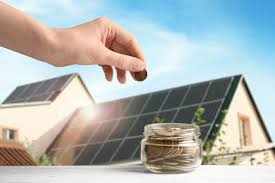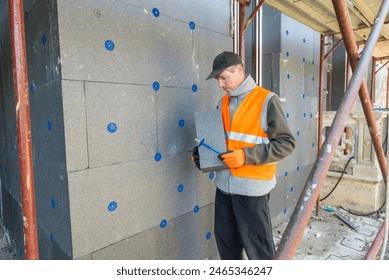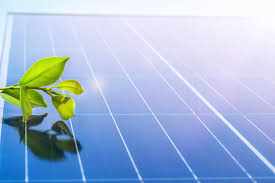
Investing in solar panels is a smart move for homeowners and businesses aiming to reduce energy bills and contribute to a more sustainable future. However, the journey to solar energy often begins with something that can seem a bit intimidating: the installation quote. Understanding this quote is crucial to making an informed decision and ensuring you get the best value for your investment.
In this blog, we’ll break down Air Source Heat Pump in london the components of a solar installation quote and explain what each part means so you can confidently evaluate offers from different providers.
1. System Size (kW)
The first number you’re likely to Solar Panel Installation london
notice on your quote is the system size, typically expressed in kilowatts (kW). This represents the maximum power output the system can produce under ideal conditions.
What it tells you: A 5 kW system, for example, can produce 5 kilowatts of power at peak performance.
Why it matters: The larger the warm home grant system, the more energy it can generate. However, a bigger system isn’t always better — the system should match your Loft Insulation London household's energy needs and roof space.
Tip: Ask how the installer calculated the system size. It should be based on your past electricity usage and potential solar exposure.
2. Estimated Energy Production
This is usually listed in kilowatt-hours (kWh) per year and indicates how much electricity the system is expected to generate annually.
What it tells you: This figure helps you estimate how much of your electricity needs will be covered by solar.
Why it matters: A 5 kW system in Arizona will produce more energy than the same system in Seattle due to differences in sunlight. Your quote should include location-specific estimates.
Tip: Look for production estimates over 25 years to understand long-term value.
3. Equipment Details
Quotes should specify the brand and model of solar panels and inverters being used. The two main components are:
Solar panels: Look for efficiency ratings and warranty length (typically 25 years).
Inverters: These convert solar energy into usable electricity for your home. Central inverters and microinverters have different benefits.
Tip: Don’t be swayed by brand names alone. Compare efficiency, degradation rate, and warranty.
4. Installation Costs and Labor
The quote should clearly outline labor and installation fees. This includes mounting the panels, wiring, permits, and connection to the grid.
What it tells you: This part separates the cost of physical materials from the service of installing them.
Why it matters: Labor costs can vary widely depending on the complexity of the installation and local regulations.
Tip: Ask if the labor cost includes post-installation services like inspections or maintenance.
5. Permits and Administrative Fees
Solar installations often require local permits and utility approvals. These fees should be itemized in the quote.
What it tells you: Shows how much of the total cost is tied to regulatory compliance.
Why it matters: Transparent quotes include these to avoid hidden fees later.
Tip: Ask the installer who handles the paperwork — many reputable companies will take care of it for you.
6. Incentives, Tax Credits, and Rebates
A well-prepared quote will show the gross cost of the system, then list deductions for federal tax credits, state/local rebates, and any utility incentives.
What it tells you: Gives you the “before” and “after” picture of your final cost.
Why it matters: The federal solar Investment Tax Credit (ITC) allows you to deduct a significant portion of your solar cost from your taxes.
Tip: Ensure all available incentives are listed, and ask the installer if they will help you apply for them.
7. Warranties and Guarantees
Good quotes include warranties for both the equipment and the workmanship:
Product Warranty: Covers the solar panels and inverters.
Performance Guarantee: Ensures the system will produce a certain amount of electricity.
Installation Warranty: Covers labor or installation-related issues.
Tip: Look for at least a 25-year product warranty and a 10-year installation warranty.
8. Monitoring and Software
Many systems come with monitoring software that allows you to track performance in real-time.
What it tells you: Shows how your system is functioning and how much energy it’s producing.
Why it matters: Early detection of issues like shading or hardware failure can prevent energy loss.
Tip: Ask if monitoring is included and whether it comes with a mobile app or web portal.
9. Financing Options
Some quotes may include options for financing, such as loans, leases, or Power Purchase Agreements (PPAs).
Loan: You own the system and pay over time.
Lease: You rent the system and pay a fixed monthly fee.
PPA: You pay for the power the system produces, not the system itself.
Tip: Understand who owns the system in each scenario — ownership affects eligibility for tax credits and potential home value increases.
10. Payback Period and ROI
Finally, the quote should estimate how long it will take for the system to pay for itself through energy savings and what your return on investment (ROI) will be.
What it tells you: When your savings will match your initial investment.
Why it matters: Most residential solar systems have a payback period between 6 and 10 years.
Tip: Ensure the payback estimate accounts for rising electricity rates and includes maintenance or inverter replacement costs.
Final Thoughts
Reading a solar panel installation quote doesn’t have to feel like decoding a foreign language. By understanding the key components — from system size and energy production to financing and warranties — you can make an informed choice that suits your home and your budget.
Always compare multiple quotes, ask questions, and never feel pressured into a decision. A reputable solar installer will be transparent, helpful, and willing to explain every line of your quote.
Would you like a checklist or template to compare multiple solar quotes side by side?
4o








Write a comment ...